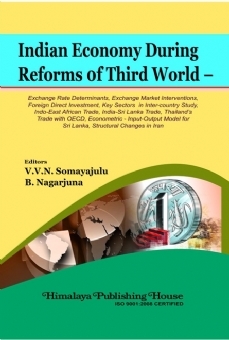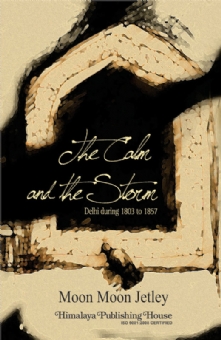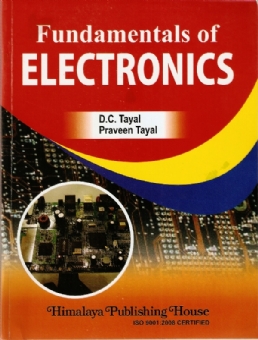This preface is intended to facilitate students and research scholars in economics, mathematical linear and non-linear economics and econometrics particularly to grasp the common uniform premises and analytical details of components of inter-industry economics frameworks. Basically, on account of uniform and common premises for frameworks of both input-output (I-O) analysis of W.W. Leontief and of Sraffa: Production of Commodities by Means of Commodities (PCMC) framework; and Non-parametric Linear Programming (LP) Production Frontier Framework; all three together are grouped and termed, Inter-industry Economics Frameworks. Distinct features from other schools of Economic Analysis; from within three of them and their economic significance are necessarily relevant to be grasped.
The titles of the papers are self-explanatory indicating to contain uniformity in respect of theme(s) of research papers of each book and relevance to Inter-industry Economics frameworks of them. All address to Indian Economy issues of reforms periods; and uniform frameworks of both Input-Output (I-O) analysis of W.W. Leontief and of Sraffa: Production of Commodities by Means of Commodities (PCMC) framework; and Non-parametric Linear Programming (LP) Production Frontier Framework; together termed, Inter-Industry Economics Framework. Sraffian PCMC, Leontief I-O models and Non-parametric L-P models have deterministic modelling, i.e., for specifications; and premises for equilibrium conditions; and non-stochastic content and/or methods of estimation of those models of inter-industry framework. For instance, I-O analysis and PCMC analysis both follow the Supply-Demand identity for an instantaneous equilibrium of unique, discrete, optimum point for each activity or process or sector, with a finite number of sectors of the economy; but without substitution between sectors’ outputs and/or inputs. However, Linear Programming Framework undergoes and starts with disequilibrium of, Supply Demand, in either of the sectors, but allows for process substitution as to bring for an equilibrium in a finite number of processes’ substitution being efficient. Given prices structure and budget constraints, optimum is unique one of a finite number of efficient points in LP solution; but both efficient and optimum points are the same unique solution in I-O analysis and PCMC analysis. In other words, PCMC, I-O and LP are analytical approaches, distinguished for facilitating inter-industry economics framework that have common premises, such as, finite and discrete processes, linearity or constant returns to scale of them, deduced from fixed input coefficients production function of W.W. Leontief, a pioneer for its new contribution. Hence, those authors of PCMC, I-O and LP and their economics, are critiques of Neo-Classicals’ premises and their economics. Sraffian PCMC is alone known for revivor of Classicals’ propositions but not necessarily so, in use of I-O analysis and LP models, though the latter two distinct frameworks, their results, and findings are also different from that of Neo-Classicals. However, the distinction between I-O and LP is clear in terms of: (i) no substitution between those finite and discrete processes, between inputs and outputs and between each of inputs and of outputs in I-O analysis, hence remain finite and discrete unique processes; only one process for each sector in I-O analysis; (ii) but, process substitution in a finite number of ways is possible in LP analysis; that results from scarcities of factors, inputs, outputs, etc. in relation to markets’ supplies vs. demands for them; prices vs. costs in case of dual form of LP Analysis; and in both cases, bottlenecks and/or shortages persist due to such a number of constraints or inequalities in LP framework; thus the inequalities are more than a distinct number to provide a solution of positive levels of activities; thus, LP analysis provides the number of solutions but to limit to the number of equalities of demand and supply of factors, inputs, commodities outputs, etc., i.e, to turn out a basic feasible solution, as also needed in I-O framework.
Hence, the basic feasible solution is a unique optimal solution in I-O framework; while in LP framework, optimal basic feasible solution for an objective function of activities (processes) is deduced to be one of efficient finite number of solutions; which depends on the number of linearly independent constraints/vectors and the optimising objective function, for a given budget line. Thus, both I-O and LP models in interindustry framework are non-stochastic and deterministic models; based on non-parametric frontier production function, applicable to interindustry framework, i.e., a uniform framework, of Sraffa-Leontief. The current themes and issues are related to Economic Reforms periods of Indian economy and are intended to resolve those problems and arriving at the solutions due to either of economic reforms, or by merely market forces or by both interactions of them, in the newly emerging applied economics, i.e., environment, information technology, infrastructure, services, tertiary and major physical, financial, fiscal and trade sectors of Indian economy.
Primal forms of I-O, PCMC and LP models provide output solutions sectors/processes; while dual forms of primal of I-O, PCMC and LP models provide relative prices structure solution irrespective of those distinct sectors of those finite processes. Then, substitution between those finite and discrete processes, between Inputs and Outputs and between each of Inputs and of Outputs is applicable to both primal and dual LP models; whereas finite and discrete unique processes or only one process for each is applicable to both primal and dual forms of I-O Analysis; and in both cases, it is due to basic feasible solution. Process substitution in LP model results from scarcity of factors, inputs, outputs, etc. in relation to market supplies versus demands for them; in turn prices versus costs per unit, as of both primal and dual forms of LP models; and in both cases, bottlenecks and/or shortages persists reflected in number of constraints or inequalities of LP frameworks; thus LP model provides multiple, feasible, basic solutions of efficient points; only one of them requires to become corner kinked optimum point solution.
Summing up, given the uniform premises and distinctions between three forms for inter-industry frameworks, the basic feasible solution is a unique optimal solution in I-O framework; while in LP framework optimal basic feasible solution for an objective function of activities (processes) is deduced to be one of efficient finite number of solutions; that depends on number of linearly independent constraints based vectors for attaining solutions of the optimising objective function, for a given set of prices and budget line. However, both I-O and LP models and Sraffian models are non-parametric frontier production function based on inter-industry economics frameworks.
The themes and issues in four books cover current economic reforms period of Indian economy, to resolve the economic issues of Indian economy for arriving at solutions and that were attributable to economic reforms, or to merely market forces or to both or not. Hence, the four books are an essential MUST for all readers / seekers of knowledge on current issues of Indian economy; a Text and Reference to all Post Graduates, Ph.D. Scholars and Faculty in Economics; to Development Executives, Planners and Policymakers for their economic practice in the current globalisation decades of Indian economy.
Contents :
1. Determinants of Exchange Rate in India
–– J. Mallaiah and B. Nagarjuna
2. Issues and Evidences in the Foreign Exchange Market Intervention
–– A. Sri Hari Naidu
3. Determinant Factors for Foreign Direct Investment: An Evidence of Transition Economies in India and China
–– S. Madhukar and B. Nagarjuna
4. Factor Endowment, Production Structure and Trade Pattern: An Inter-country Study of Key Sectors
–– Arun K. Sengupta and Tushar Das
5. Input-Output Modeling of Growth Effect of Indo-East African Trade
–– Shri Prakash and Rekha Sharma
6. Analysis of Impact of India-Sri Lanka Bilateral Trade Liberalization using CGE Modeling
–– Chandrima Sikdar
7. Environmental Impacts of Thailand’s Trade with OECD Countries
–– Kakali Mukhopadhyay and Debesh Chakraborty
8. Structural Changes in the Iranian Economy (1991-2006) with Special Focus upon its Oil Economy: A Structural Decomposition Analysis
–– Nasim Fathi
9. An Integrated Macro-econometric and Input-Output Model for Sri Lanka
–– Partha Pratim Gosh
10. Economic Planning and Policy in Cobweb Models of Four Markets in Three Economic Systems of Mixed Market-friendly Developed and Developing Countries – Why and How They Differ?
–– V.V.N. Somayajulu







